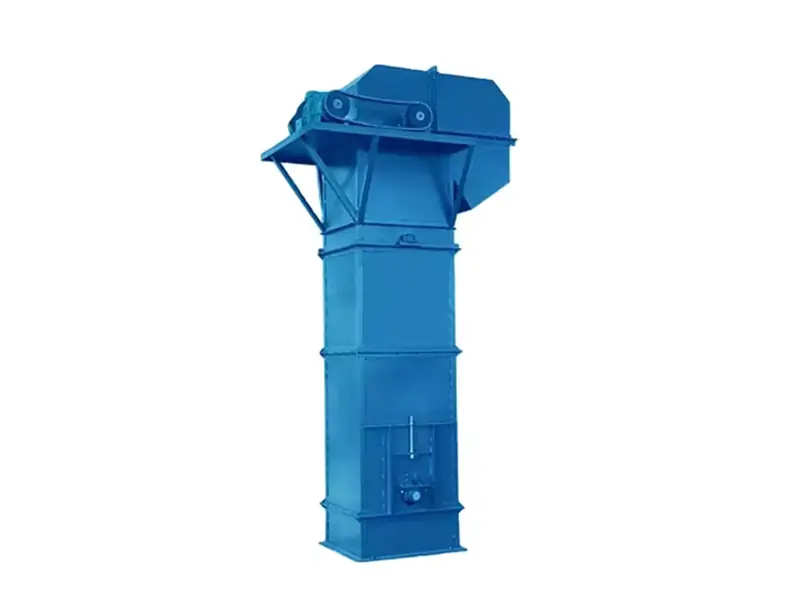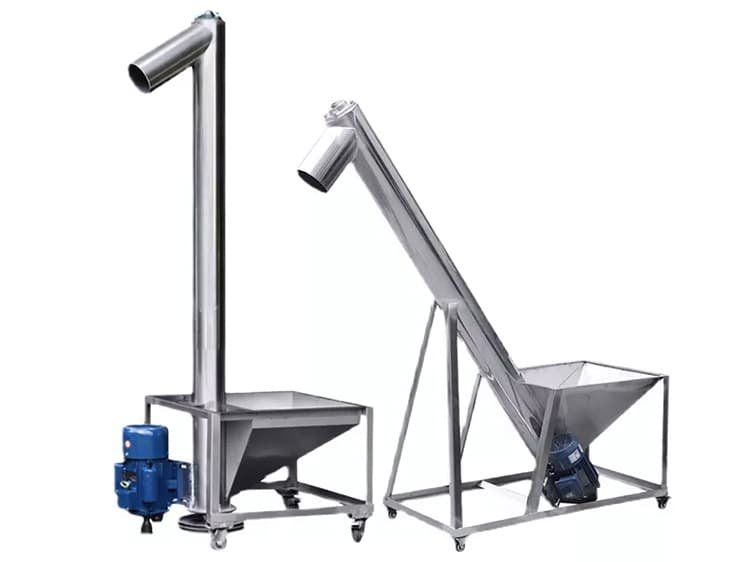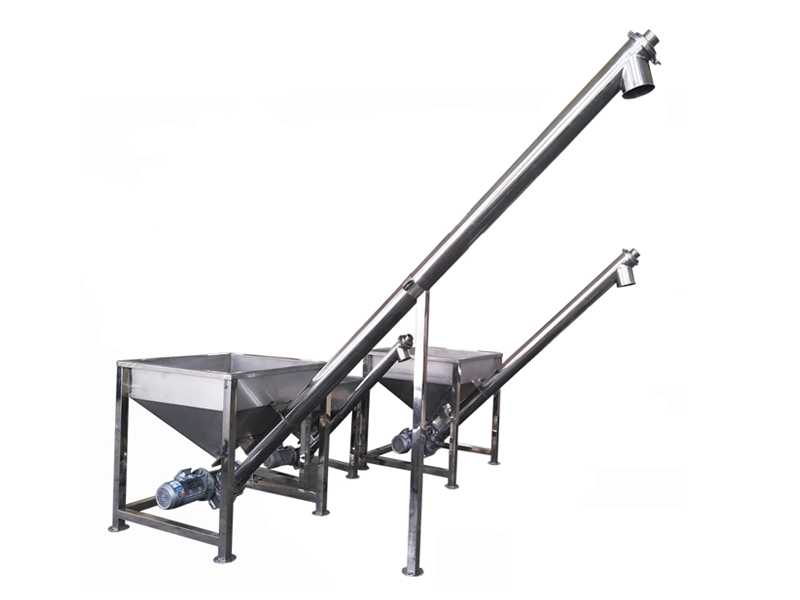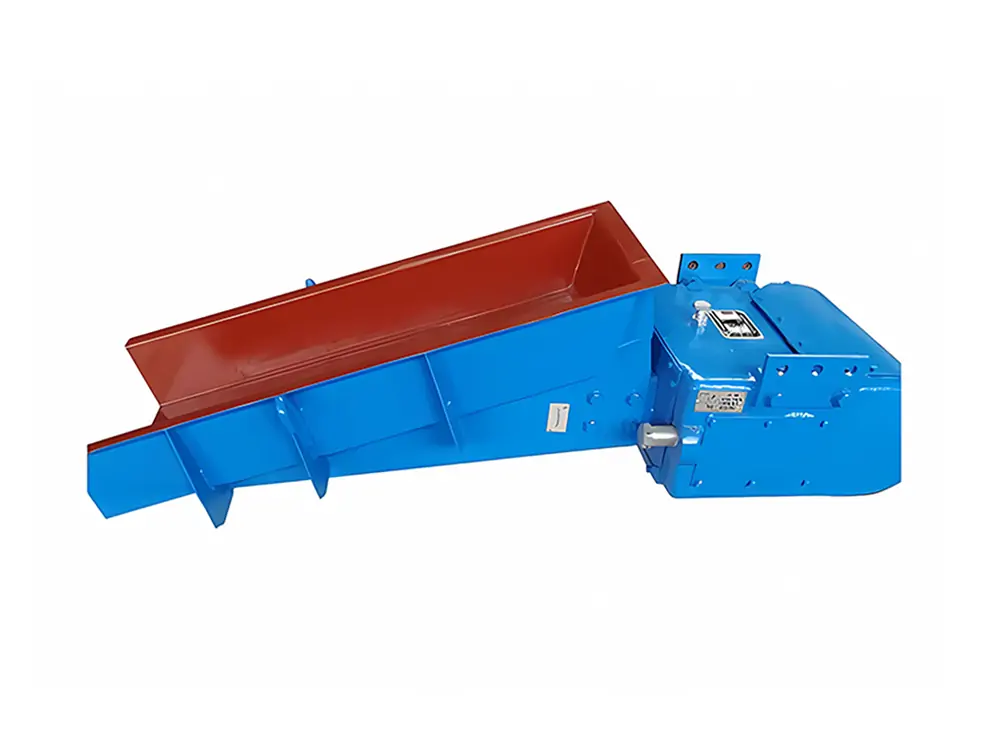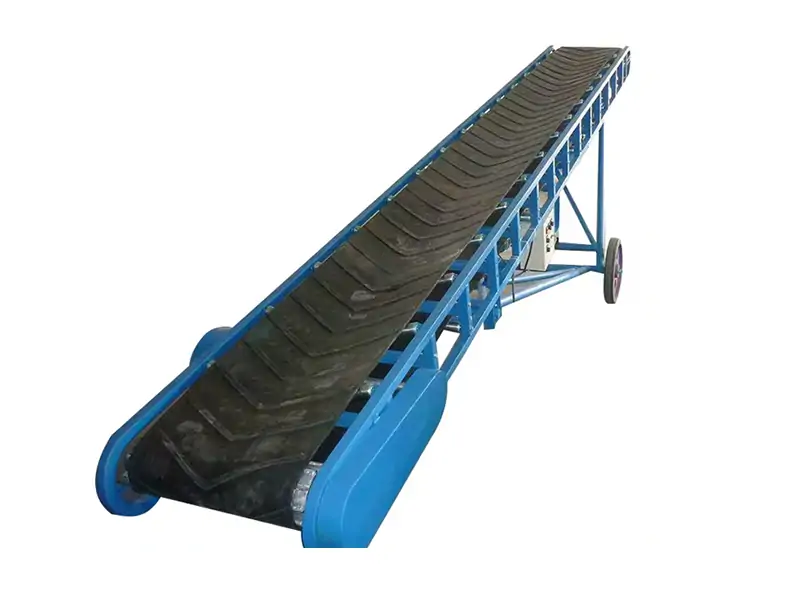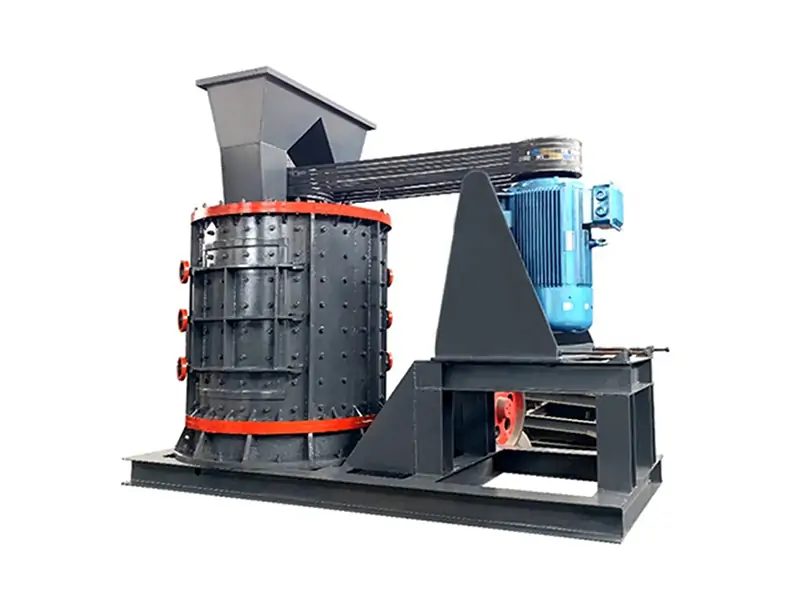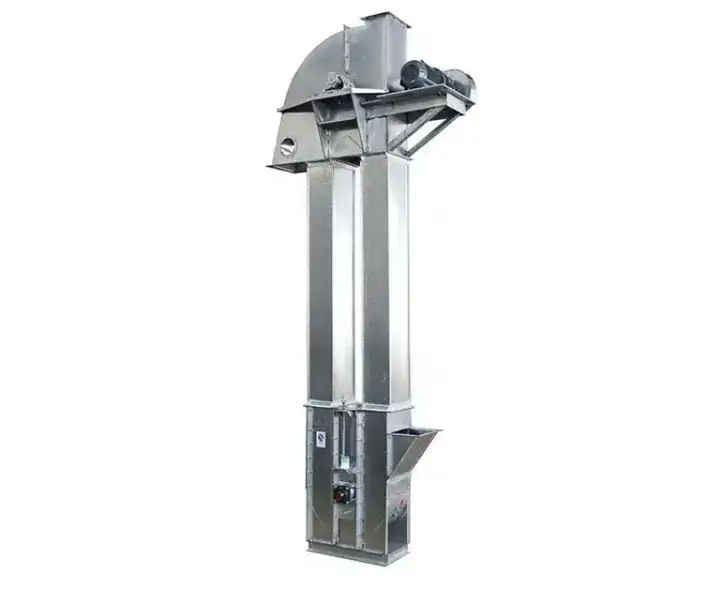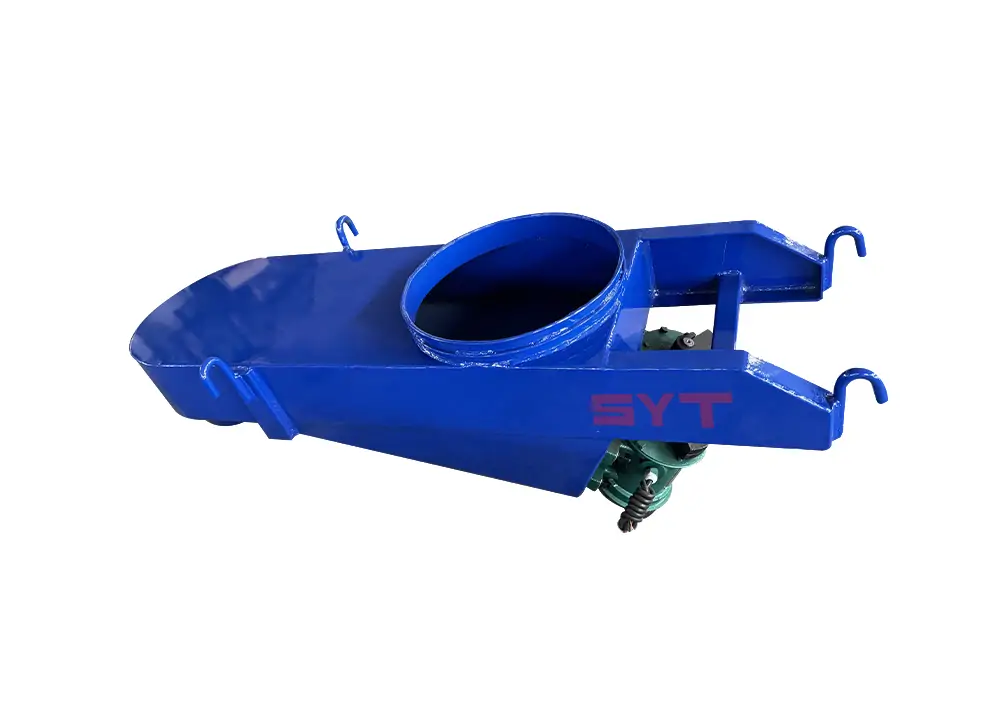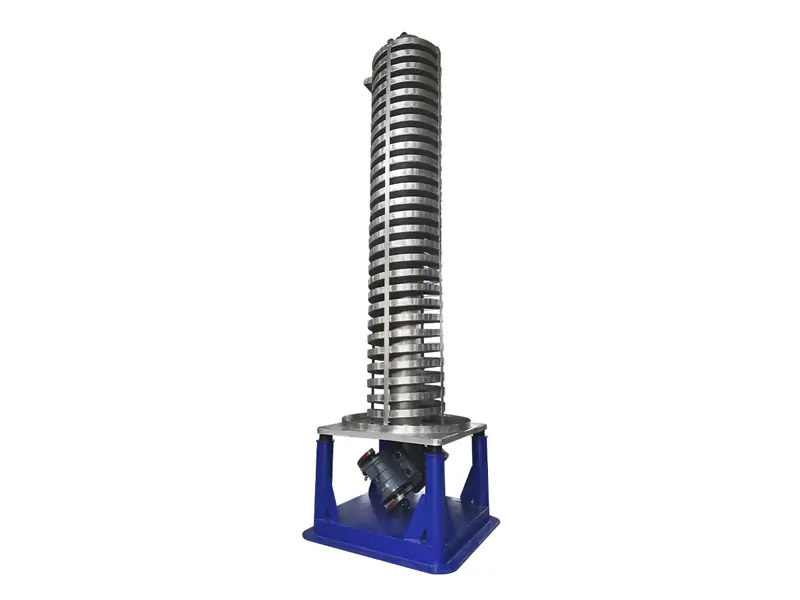Bucket elevator is a kind of mechanical equipment used for vertical transportation of materials, which is widely used in grain, chemical, building materials, metallurgy and other industries. It lifts the materials from low to high place through the hopper fixed on the chain, plate chain or tape, which has the advantages of high efficiency, stability, small footprint and so on. According to the different traction parts, bucket elevator is mainly divided into three types: ring chain bucket elevator, plate chain bucket elevator and belt bucket elevator. This article will introduce the characteristics, specifications, application scenarios, advantages and disadvantages of these three types of bucket elevators to help you better choose the right equipment.
Ring Chain Bucket Elevator
Ring chain bucket elevator adopts mixed or gravity discharging, digging type loading, and the type of hopper can be deep or shallow. Ring chain bucket elevator adopts high quality alloy steel high-strength circular chain as traction parts, the hopper is fixed on the chain, through the chain’s cyclic movement to realize the lifting and unloading of materials. The lifting height is usually between 10 meters and 50 meters, and it can convey 10 to 300 cubic meters of materials per hour. Widely used in mining, metallurgy, building materials and other industries, it is suitable for conveying large, heavy or abrasive materials, such as coal, limestone, cement, gravel, sand, fertilizer, grain and so on.

Advantages: ring chain bucket elevator structure is simple, the connection between the hoppers is relatively strong, stable operation, low maintenance costs.
Disadvantages: slower running speed, relatively low conveying efficiency. The chain needs to be replaced regularly after wear.
Ring Chain Bucket Elevator Specification
| Model | TH160 | TH250 | TH315 | TH400 | TH500 | TH630 | TH800 | TH1000 | TH1250 | ||||||||||
| Hopper type | zh | sh | zh | sh | zh | sh | zh | sh | zh | sh | zh | sh | zh | sh | zh | sh | zh | sh | |
| Conveying capacity, m 3 /h | 19 | 30 | 30 | 48 | 35 | 59 | 58 | 94 | 73 | 118 | 114 | 185 | 150 | 240 | 240 | 360 | 360 | 540 | |
| Hopper | Hopper capacity(l) | 1.2 | 1.9 | 3 | 4.8 | 3.75 | 6 | 5.9 | 9.5 | 9.3 | 15 | 14.6 | 23.6 | 24 | 38 | 38 | 60 | 60 | 95 |
| Hopper distance(mm) | 350 | 450 | 512 | 688 | 936 | 936 | 1001 | ||||||||||||
| Chain | Diameter of round steel x section (mm) | φ12X45 | φ18X64 | φ22X86 | φ24X86 | φ24X86 | φ28X92 | ||||||||||||
| Single chain breaking strength (KN) | ≥170 | ≥320 | ≥480 | ≥560 | ≥560 | ≥660 | |||||||||||||
| Hopper movement Speed (m/s) | 1.3 | 1.2 | 1.4 | 1.5 | 1.6 | 1.6 | 1.6 | ||||||||||||
| Chain sprocket rotation (r/min) | 62.5 | 46.8 | 42.5 | 37.6 | 35.8 | 31.8 | 30.5 | 30.5 | 28 | ||||||||||
| Maximum lump size of material to be conveyed (mm) | 20 | 25 | 35 | 40 | 50 | 60 | 75 | 85 | 100 | ||||||||||
Plate Chain Bucket Elevator
Plate Chain Bucket Elevator adopts self-flowing loading, gravity discharging, deep hopper or specially designed hopper, the hopper is fixed on the plate chain, the chain is high-quality alloy steel high-strength plate chain with high abrasion resistance, and the driving part adopts hardened gear reducer, which realizes the lifting and discharging of the materials through the cyclic movement of the plate chain. The lifting height is usually between 5 meters and 40 meters, using, every hour can convey 20 to 500 cubic meters of materials. Suitable for high temperature, corrosive medium and large block and abrasive materials, widely used in cement, chemical industry, electric power and other industries, suitable for conveying such as limestone, cement clinker, gypsum, fertilizer, slag, lump coal, etc., the material temperature of 250 ℃ or less.
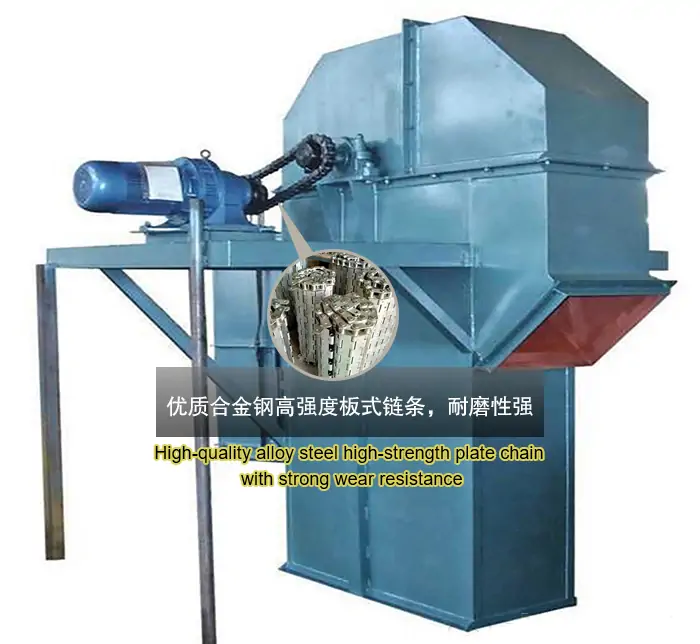
Advantages: light weight, sturdy structure, strong carrying capacity, suitable for large capacity transportation. High temperature resistance, corrosion resistance, wide applicability. Smooth operation, low noise.
Disadvantages: high initial investment cost. Complex structure, articulated joints are easy to be worn out and difficult to maintain.
Plate Chain Bucket Elevator Specification
| Model | Conveying capacity (m3/h) | Bucket speed (m/s) | Spindle speed (rpm) | Material granularity (mm) | Hopper | ||
| Volume (liters) | Hopper width (mm) | Hopper distance (mm) | |||||
| NE15 | 15 | 0.5 | 15.54 | <40 | 2.5 | 250 | 203 |
| NE30 | 32 | 16.45 | <50 | 7.8 | 300 | 305 | |
| NE50 | 60 | 16.45 | <50 | 15.7 | 300 | 305 | |
| NE100 | 110 | 14.13 | <70 | 35 | 400 | 400 | |
| NE150 | 170 | 14.13 | <70 | 52.2 | 600 | 400 | |
| NE200 | 210 | 10.9 | <100 | 84.6 | 600 | 500 | |
| NE300 | 320 | 10.9 | <100 | 127.5 | 600 | 500 | |
| NE400 | 380 | 8.3 | <120 | 182.5 | 700 | 600 | |
| NE500 | 470 | 7.1 | <120 | 260.9 | 700 | 700 | |
| NE600 | 600 | 7.1 | <120 | 33.2 | 700 | 700 | |
| NE800 | 800 | 6.2 | <140 | 501.8 | 800 | 800 | |
Belt Bucket Elevator
Belt bucket elevator adopts centrifugal discharging and emptying type loading, with shallow or deep hopper design, the hopper is fixed on the steel wire rope belt to realize the lifting and unloading of materials through the cyclic movement of the belt. The steel wire rope belt is strong and can lift 32-686m3/h, the lifting height of single machine is usually between 10m and 60m, and the material can be transported from 10 to 200 cubic meters per hour. With less wearing parts, the maintenance cost is more than 80% less than general bucket elevator. Belt bucket elevator is widely used in grain, feed, food and other industries, suitable for conveying lightweight, good fluidity of powdery, granular and lumpy materials, such as wheat, corn, flour and so on.

Advantages: relatively simple structure, fast running speed, high conveying efficiency, simple structure, low maintenance cost, suitable for conveying lightweight, good fluidity of the material.
Disadvantages: not suitable for conveying high temperature, corrosive or abrasive materials, the tape is easy to wear, need to be replaced regularly.
Belt Bucket Elevator Specification
| Model | TD160 | TD250 | TD315 | TD400 | ||||||||||||
| Hopper form | Q | h | zD | Sd | Q | h | zD | Sd | Q | h | zD | Sd | Q | h | zD | Sd |
| Conveying capacity(m3/h) | 5.4 | 9.6 | 9.6 | 16 | 12 | 22 | 23 | 35 | 17 | 30 | 25 | 40 | 24 | 46 | 41 | 66 |
| Bucket width(mm) | 160 | 250 | 315 | 400 | ||||||||||||
| Bucket capacity(L) | 0.5 | 0.9 | 4.2 | 1.9 | 1.3 | 2.2 | 3 | 4.6 | 2 | 3.6 | 3.8 | 5.8 | 3.1 | 5.6 | 5.9 | 9.4 |
| Bucket distance(mm) | 280 | 350 | 360 | 450 | 400 | 500 | 480 | 560 | ||||||||
| Belt width(mm) | 200 | 300 | 400 | 500 | ||||||||||||
| Bucket speed(m/s) | 1.4 | 1.6 | 1.6 | 1.8 | ||||||||||||
| Material capacity(mm) | 25 | 35 | 45 | 55 | ||||||||||||
| Model | TD500 | TD630 | TD160 | TD250 | TD350 | TD450 | ||||||||||
| Hopper form | Q | h | zD | Sd | h | zD | Sd | Q | S | Q | S | Q | S | Q | S | |
| Conveying capacity(m3/h) | 38 | 70 | 58 | 92 | 85 | 89 | 142 | 4.7 | 8 | 18 | 22 | 25 | 42 | 50 | 72 | |
| Bucket width(mm) | 500 | 630 | 160 | 250 | 350 | 450 | ||||||||||
| Bucket capacity(L) | 4.8 | 9 | 9.3 | 15 | 14 | 14.6 | 23.5 | 0.65 | 1.1 | 2.6 | 3.2 | 7 | 7.8 | 14.5 | 15 | |
| Bucket distance(mm) | 500 | 625 | 710 | 300 | 400 | 500 | 640 | |||||||||
| Belt width(mm) | 600 | 700 | 200 | 300 | 400 | 500 | ||||||||||
| Bucket speed(m/s) | 1.8 | 2 | 1 | 1.25 | 1.25 | 1.25 | ||||||||||
| Material volume(mm) | 60 | 70 | 25 | 35 | 45 | 55 | ||||||||||
Conclusion
As a kind of efficient material conveying equipment, bucket elevator plays an important role in many industries. The three common types of bucket elevator introduced in this article – ring chain bucket elevator, plate chain bucket elevator and belt bucket elevator – each have their own unique advantages and applicable scenarios. Ring chain bucket elevators are suitable for conveying heavier or abrasive materials, plate chain bucket elevators are suitable for conveying high temperature or corrosive materials, and belt bucket elevators are suitable for conveying lightweight, well-flowing materials. In the choice of bucket elevator, according to the characteristics of the material, conveying needs and budget and other factors to ensure that the most suitable equipment. We hope this article can provide you with valuable references to help you better understand and apply bucket elevator.
Related Articles
- What is a Bucket Elevator?
- Bucket Elevator Installation and Operation Instructions
- Stainless Steel Bucket Elevator In Food Industry
- Vertical Vibrating Elevator vs Bucket Elevator: How to Choose?
- Selection Guide for Vibrating Spiral Elevators: Advantages and Disadvantages
